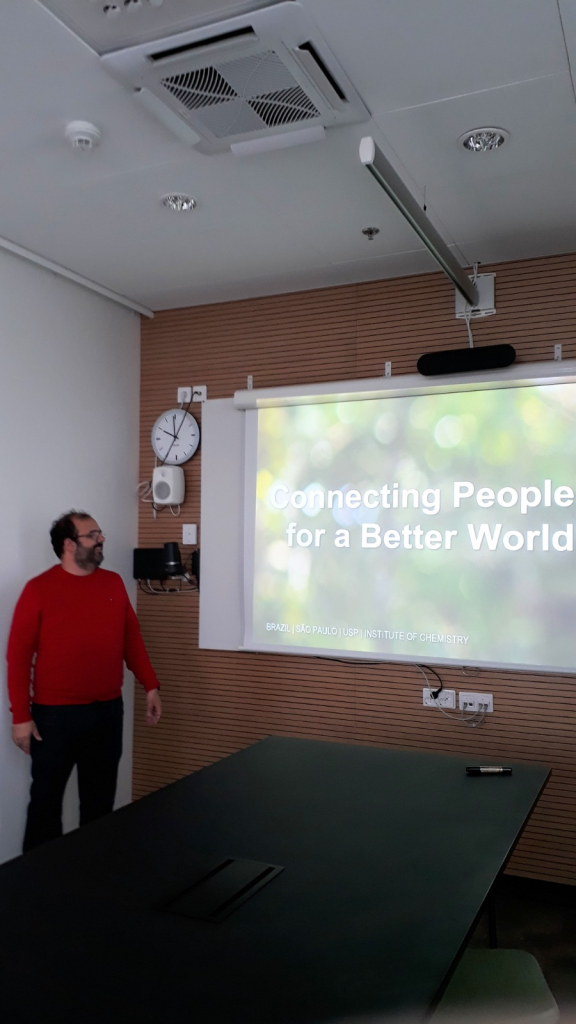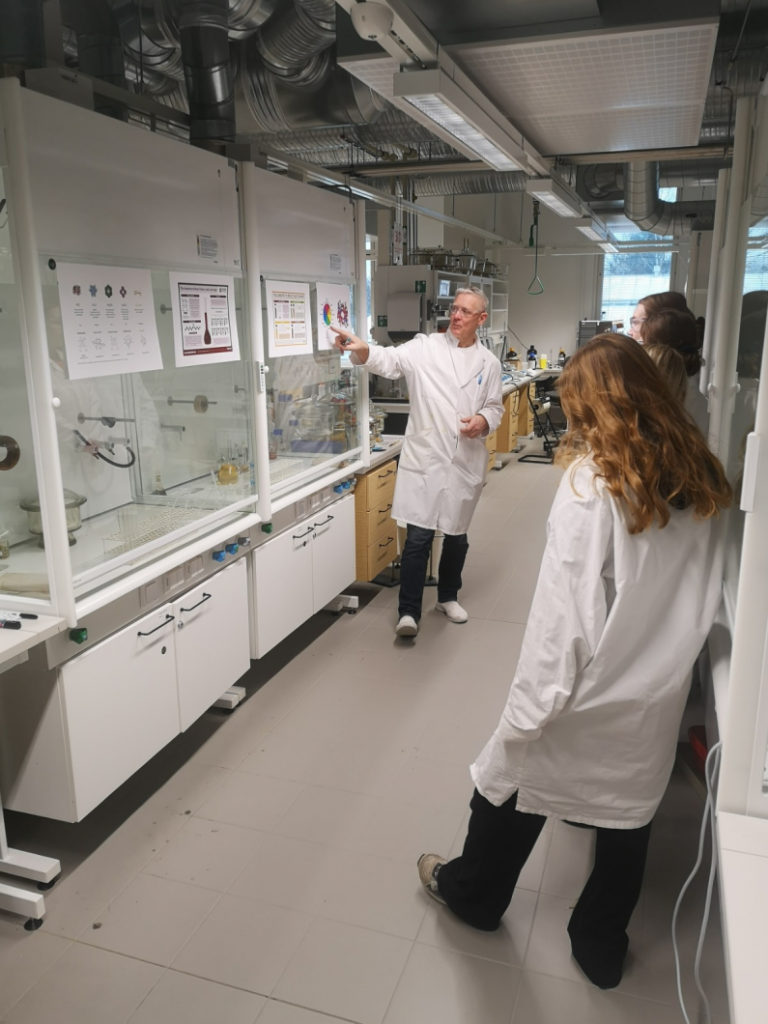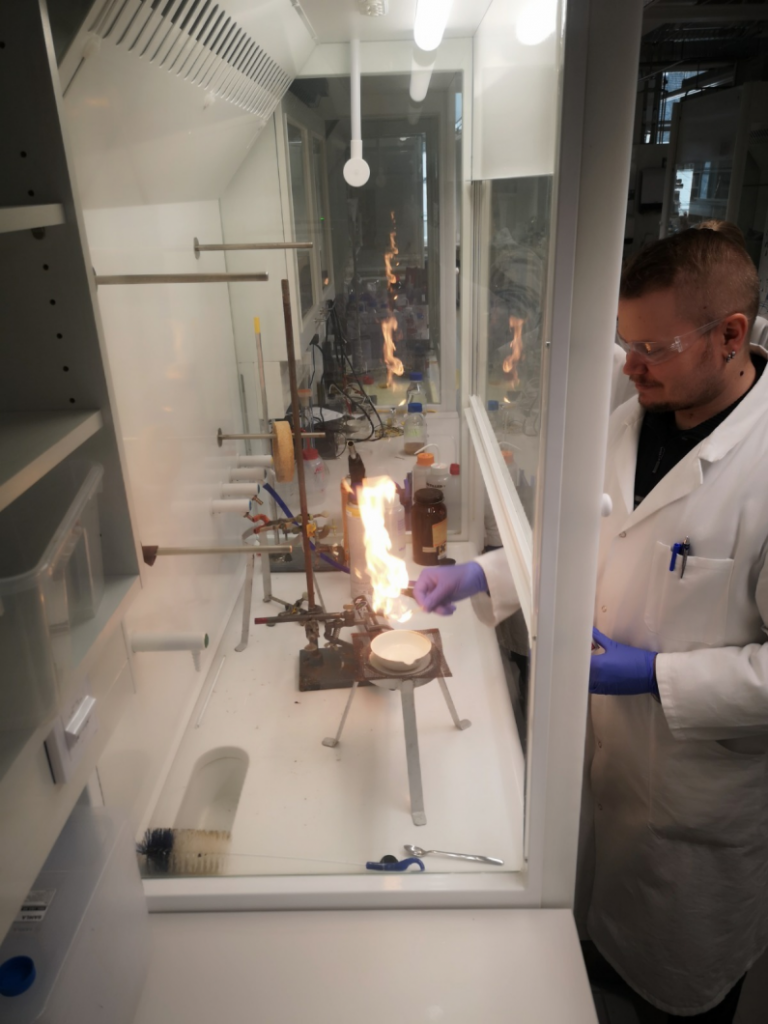Today, Mika, Sami and Natalia visited Turku University Hospital to test imaging using biocompatible photonic glass. With the help of medical physicist Heli Larjava and radiological nurse Terhi Nieminen we got very nice results.




Today, Mika, Sami and Natalia visited Turku University Hospital to test imaging using biocompatible photonic glass. With the help of medical physicist Heli Larjava and radiological nurse Terhi Nieminen we got very nice results.



Kemistin työkalupakin neljännessätoista osassa dosentti Anssi Peuronen esittelee yksikideröntgendiffraktometrin toimintaa.
Kemistin työkalupakin kolmannessatoista osassa dosentti Anssi Peuronen esittelee jauheröntgendiffraktometrin (XRD) toimintaa.
Dr. Sami Vuori spoke yesterday 29.2.2024 about his dissertation work “Reversible Photochromism of Synthetic Hackmanites in Radiation Detection And Quantification” at the spring meeting of the Chemist Club of Turku (Turun Kemistikerho). Sami demonstrated the coloration of hackmanite samples with UV light using the props he brought, which gave the audience a tangible understanding of the topic. Photos by Pietari Huuskonen.




Last week, IMC alumnus and honorary member Professor Lucas Carvalho Veloso Rodrigues visited us to conduct research and promote potential student exchange opportunities between UTU and the University of São Paulo (USP), Brazil, focusing on Chemistry and Molecular Science programs. As the largest university in Latin America, USP welcomes students at all levels. Explore exchange details at bit.ly/visitUSP

From left to right: Prof. Mika Lastusaari, Dr. Minnea Tuomisto, Prof. Lucas C. V. Rodrigues, Dr. Sami Vuori
Kemistin työkalupakin kahdennessatoista osassa tohtori Sami Vuori esittelee röntgenfluoresenssispektrometrin (XRF) toimintaa.
Today February 8 a DemoDay for first-year high school students was organized, where approx. 1,300 high school students from Turku and Parainen got to visit the universities in the Turku area. During the day, IMC held demos and presentations for a total of eight groups, with the following topics:
– Why blood has a red colour? (Ari Lehtonen)
– Glowing materials (Sami Vuori & Minnea Tuomisto)
– Intelligent sensor materials inspired by nature (Mika Lastusaari)
Thanks to all participants, and we wish you fruitful moments studying chemistry!







Kemistin työkalupakin yhdennessätoista osassa dosentti Anssi Peuronen esittelee synteesiuunin toimintaa.
Kemistin työkalupakin kymmenennessä osassa professori Mika Lastusaari esittelee valokaapin toimintaa.

The recruitment for the new hackmanite project funded by the Jane and Aatos Erkko Foundation is now on. The call ends at the end of January. Please see the UTU recruitment pages for more details. Our call IDs are labelled as ID 20134 and ID 20124.
Shortcuts to the calls:
1-2 Doctoral Researchers / Project Researchers:
imc.utu.fi/endoc
Postdoctoral Researcher/Project Researcher:
imc.utu.fi/enpostdoc